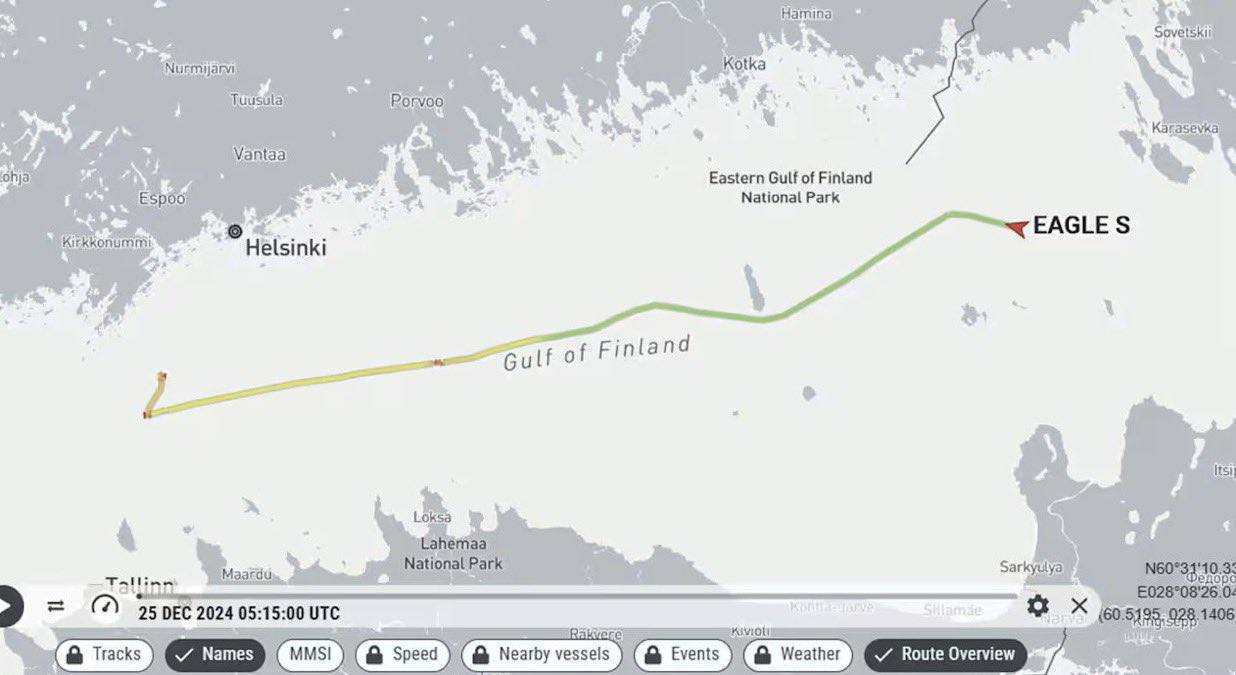The Baltic region has long been a stage for covert confrontation between Russia and the West. Russia employs hybrid tactics, including sabotage, cyberattacks, and information manipulation, to destabilise its neighbours and Europe as a whole. Recent events, such as the damage to the Estlink 2 underwater power cable connecting Estonia and Finland, heighten suspicions of deliberate acts of sabotage.
The Shadow Fleet of Russia
At the centre of the incident is the Russian tanker Eagle S, which reportedly displayed anomalies in its movements near the damaged cable. This tanker is linked to Russia’s so-called “shadow fleet”—a group of vessels used for illicit operations, sanctions evasion, and sabotage. Alongside the Russian vessel, the Hong Kong-flagged tanker Xin Xin Tian 2 was also present in the area, owned by a company tied to Russian interests.
Such incidents are not unprecedented. In recent months, there have been numerous instances of damage to underwater cables and pipelines in the Baltic Sea, raising concerns about systematic attacks. Russia appears intent on exposing vulnerabilities in European infrastructure, undermining confidence in its security and creating chaos within energy systems.
Energy Independence at Risk
The Estlink 2 cable plays a critical role in ensuring the energy independence of the Baltic region. It reduces the reliance of Baltic states on energy supplies from Russia, making it a strategically significant target. The damage inflicted on the cable could be part of a broader campaign to pressure NATO countries, particularly Finland, which recently joined the alliance and has been actively supporting Ukraine.
Hybrid Warfare in Action
Russia’s actions can be seen as a form of “energy terrorism.” Sabotaging energy infrastructure poses a threat not only to the economies of the region but also to their political stability. The attack also challenges the EU and NATO: their response to such actions will serve as a litmus test of their readiness to protect critical infrastructure and counter hybrid threats.
Russia seemingly aims to exploit these incidents to test Europe’s weaknesses, sow internal discord, and assert its influence in the Baltic region. If the international community’s response is neither swift nor decisive, it risks emboldening Moscow and encouraging further acts of sabotage.
Conclusion
The events surrounding Estlink 2 are but a chapter in the ongoing confrontation in the Baltic region. This clash, occurring at the intersection of the interests of Russia, NATO, and the EU, is becoming increasingly visible and perilous. Amid geopolitical tensions, the Baltic Sea is evolving into a battleground for covert yet intense struggles for power and influence.
Semen Melnychenko

